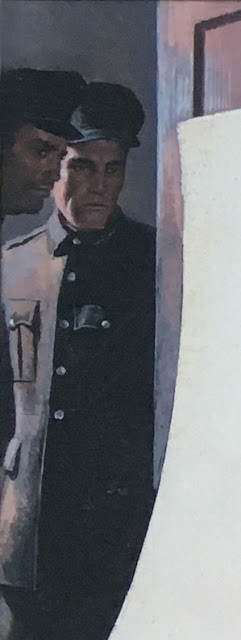You probably don't know the work of illustrator Charles Sarka but you probably should.
Sarka (1879-1960) started out as an apprentice to an engraver and became a staff artist for newspapers (first for the
Chicago Record and then for the
New York Herald). He did some lovely pen and ink work for
Collier's,
Cosmopolitan and
Harpers in the era of pen and ink greats: Joseph Clement Coll, Charles Dana Gibson, Orson Lowell and James Montgomery Flagg. In my view, his excellent pen and ink work belongs in that esteemed company.
However, unlike his peers Sarka had wanderlust. Rather than sit by his drawing board he traveled extensively to South Pacific Islands, Africa and other remote locations where he recorded his travels in watercolors. His paintings of the hill tribes of Morocco, of the natives of Tahiti and the markets of Egypt took him far from the normal career path of a typical American illustrator, so his name is not as well known. Still, I think his early ink work is excellent.
Note in this detail how Sarka not only understands hands, but toys with different comic possibilities for presenting them. He uses a strong, vigorous line to add some excitement to that solid coat and the folds in those pants, but he also appreciates the value of using a variety of effects, such as the spatters on that tire:
In the following detail, his lines shaping those trees are quite muscular, but Sarka knows when to back off, contrasting them with a single lacy line to convey that cigarette smoke; he even adds a few little tweety birds flying through it:
Note how Sarka gives the trees density, weight and movement by giving them heavy shadows and curling them over, (as contrasted with that cigarette smoke which wafts upward on an errant breeze-- one set of lines has to fight gravity and the other one doesn't).
And speaking of lacy, Sarka applies the same lesson to these two charming ladies. They are clearly earthbound creatures, as we can tell from the volume and density in their dresses and coiffure, but that scarf wafts upward, contrary to gravity, with a different line just like the cigarette smoke.
 |
| Two li'l dollinks somewhere between heaven and earth |
I like that Sarka put so much personality and energy in his line. I like that he understood perspective and anatomy but used them only as starting points. I like the sense of humor in his drawing. If he'd stayed home and created a substantial body of work in pen and ink, I feel certain he'd be in the pantheon today.




















